Ending a business partnership can be a challenging yet necessary decision. It's important to convey your thoughts clearly while maintaining professionalism and respect for your former partner. In this article, we'll guide you through the essentials of drafting a letter to formally terminate a partnership, ensuring you cover all the critical points without burning bridges. So, if you're ready to navigate this process with confidence, keep reading for our expert tips and templates!

Clarity and Directness
Ending a business partnership can be a complex decision, often influenced by various factors. Clear communication is essential during this process. For example, transparency about the reasons for the dissolution, such as changes in business strategies or financial disparities, can help maintain professionalism. Documenting all agreements and obligations, such as asset distribution and remaining liabilities, ensures that both parties understand their responsibilities. Setting a timeline for the transition can also aid in a smooth separation, preventing misunderstandings. Ultimately, a respectful dialogue can preserve relationships and reputations for potential future collaborations.
Professional Tone
In the rapidly evolving landscape of business, it is crucial to address the conclusion of a partnership with clarity and respect. The partnership, engaged in collaborative projects since a formal agreement in January 2019, significantly impacted both organizations involved. A strategic alliance between Company A, a leading tech firm specializing in software solutions, and Company B, an innovative marketing agency, has yielded successful campaigns and product launches over the past four years. Recent developments indicate a divergence in strategic visions, prompting the need for this decision. The official termination will be effective on December 31, 2023, allowing time for the transition of responsibilities, such as ongoing projects and shared assets. Both parties remain committed to finalizing all pending obligations, ensuring a professional conclusion. This decision reflects a mutual understanding of evolving business needs rather than any deficiencies. Open lines of communication will remain until the formal end date, fostering goodwill and potential collaboration on future endeavors.
Reason for Termination
The decision to terminate a business partnership often stems from various reasons that impact the effectiveness or harmony of the collaboration. Factors such as failing to meet financial obligations, significant strategic disagreements, or changes in market conditions can necessitate this course of action. Additionally, a lack of communication or transparency in operations may hinder progress, leading partners to reassess their mutual goals. External influences, such as regulatory changes or economic downturns, can also play a substantial role in prompting a reevaluation of the partnership agreement. Ultimately, prioritizing long-term business interests while considering legal obligations and ethical standards becomes crucial in these scenarios.
Transition Arrangements
Transition arrangements during the end of a business partnership can significantly impact both parties. Clear communication is essential. Establish a timeline detailing critical dates for asset distribution, such as inventory or intellectual property, ensuring both parties agree on valuations. Determine responsibilities for ongoing projects, especially in sectors like technology or manufacturing, where unfinished tasks may affect deadlines. Arrange client communication strategies to maintain relationships, outlining who will manage client accounts post-transition. Consider consulting legal advisors to finalize agreements, addressing potential liabilities. Establishing a comprehensive exit plan fosters a smooth transition, preserving professional reputations and future collaboration opportunities.
Expression of Gratitude
A formal business partnership conclusion can evoke gratitude and reflection on shared accomplishments. Acknowledgment of collaborative efforts highlights notable milestones achieved together, such as revenue increases by 25% over two years or successful product launches that generated media attention. Recognition of trust built through transparent communication fosters positive sentiment. Future aspirations may include considering potential avenues for re-engagement or joint ventures that align with evolving business objectives. Maintaining a professional relationship for networking possibilities enhances the partnership's legacy, ensuring that both parties hold mutual respect for future endeavors.

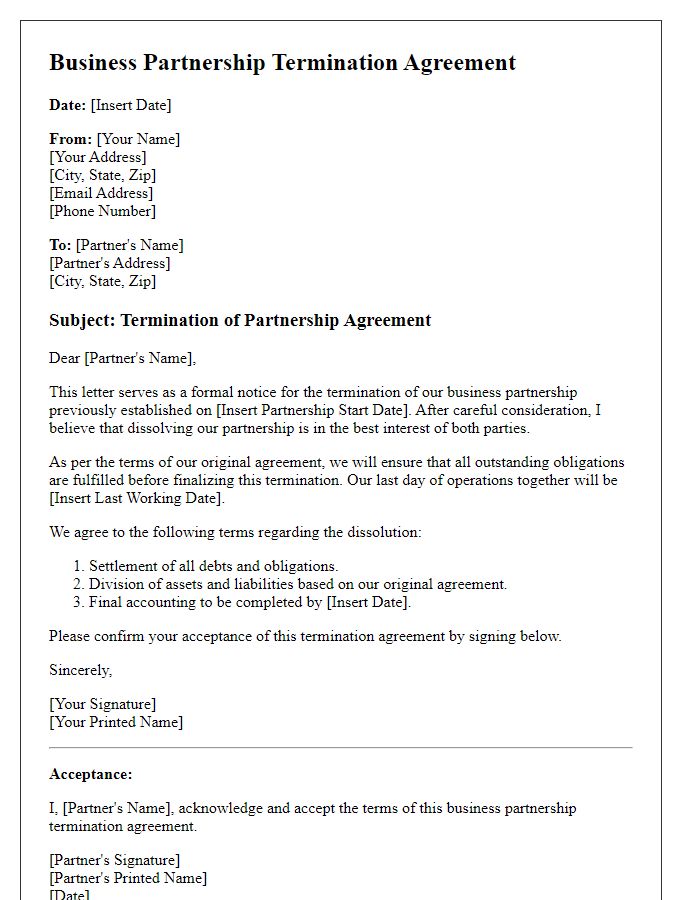
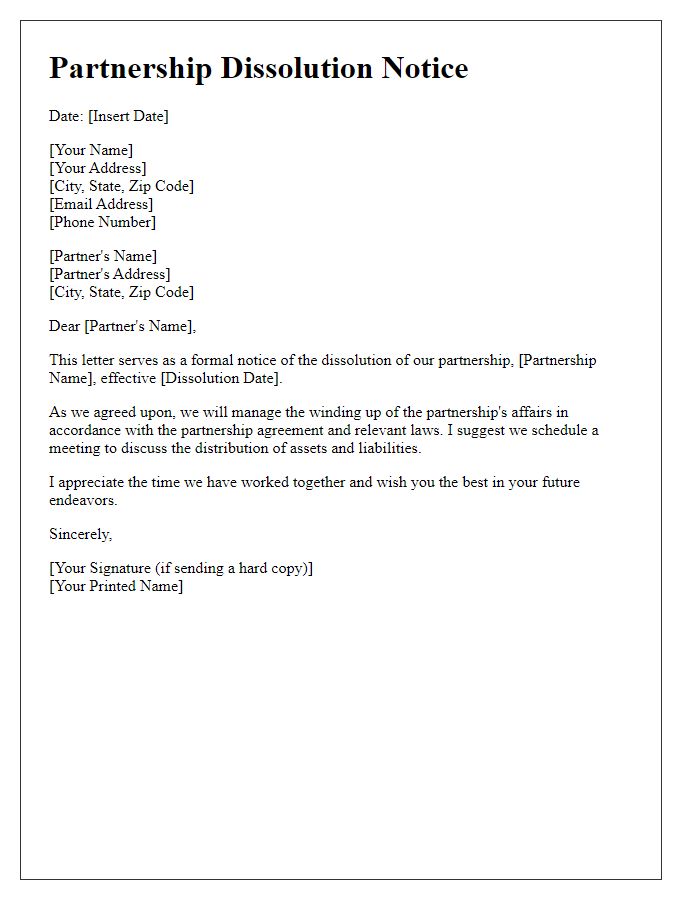
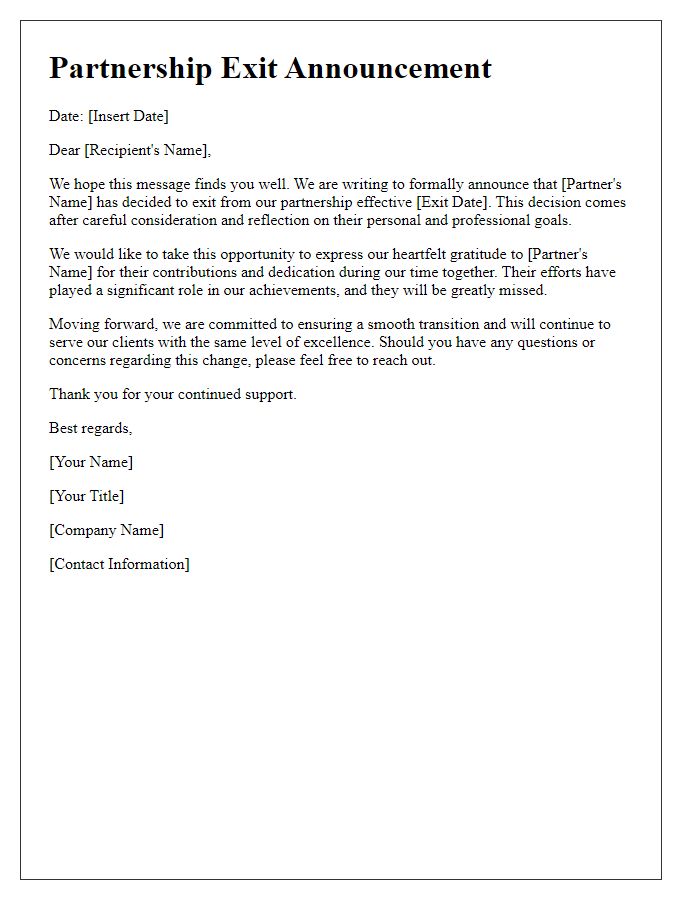
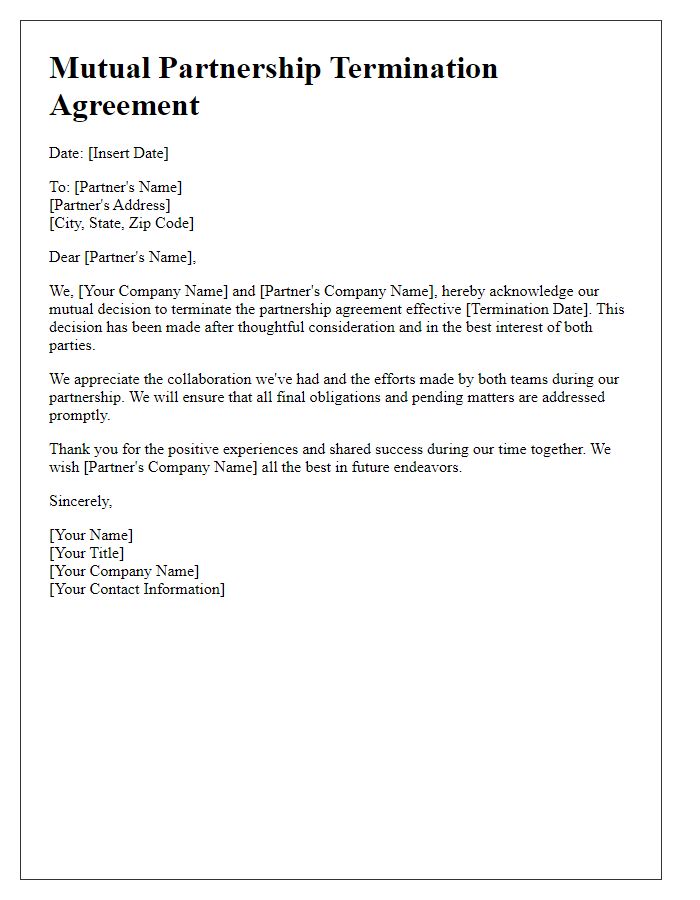
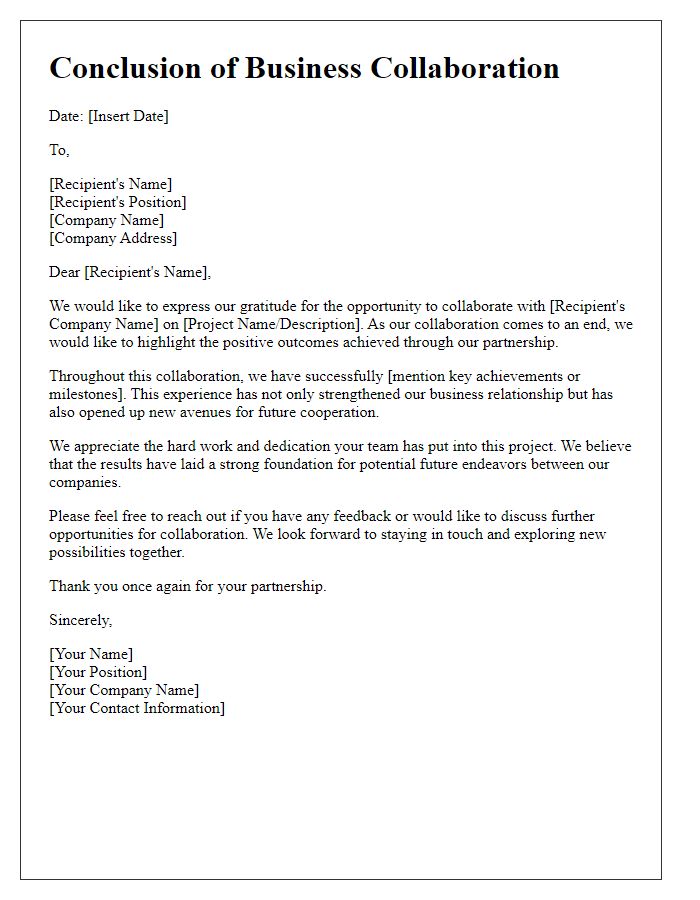


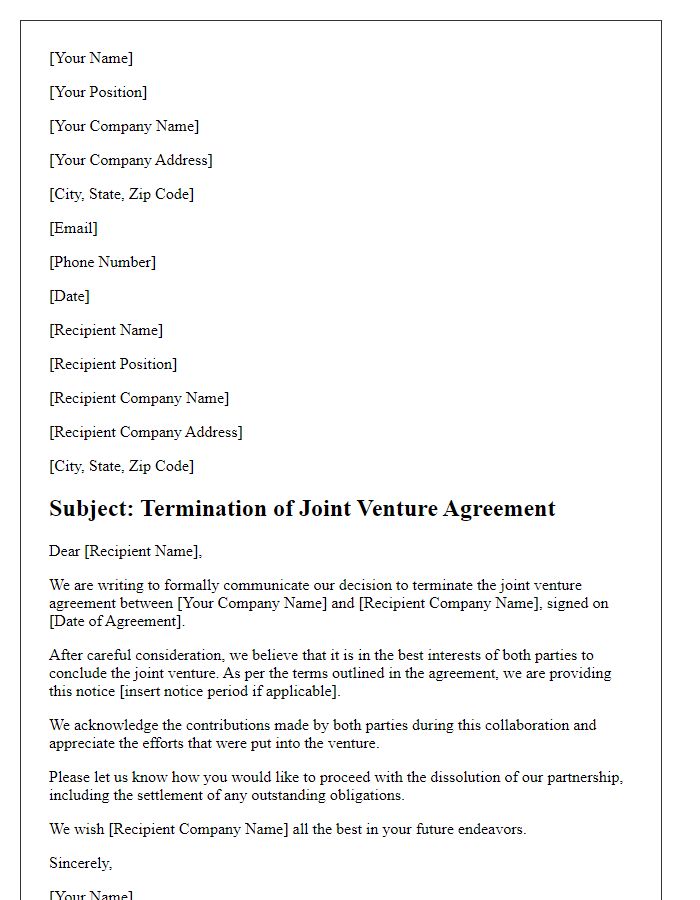
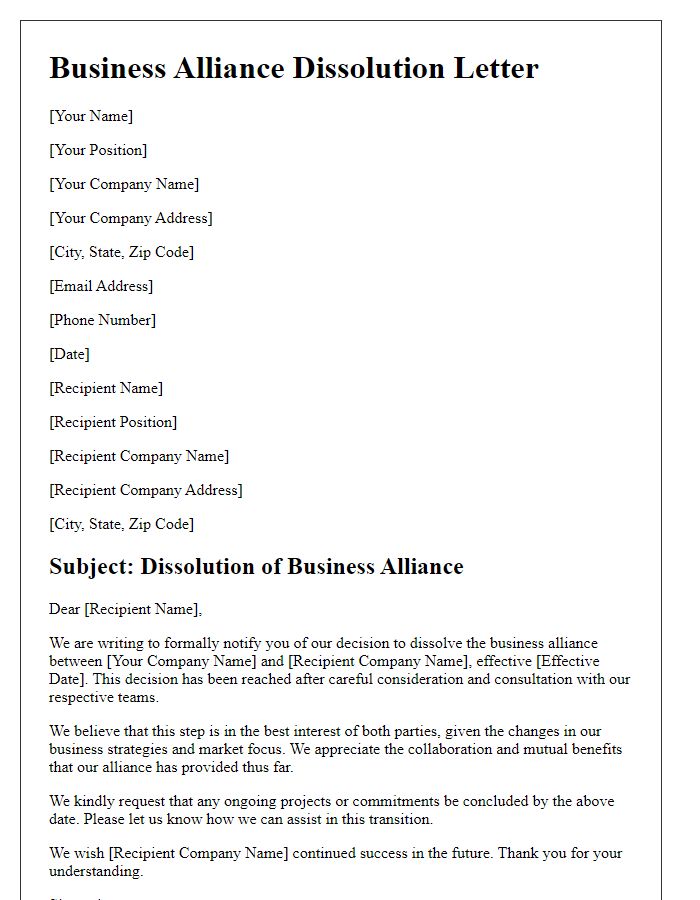
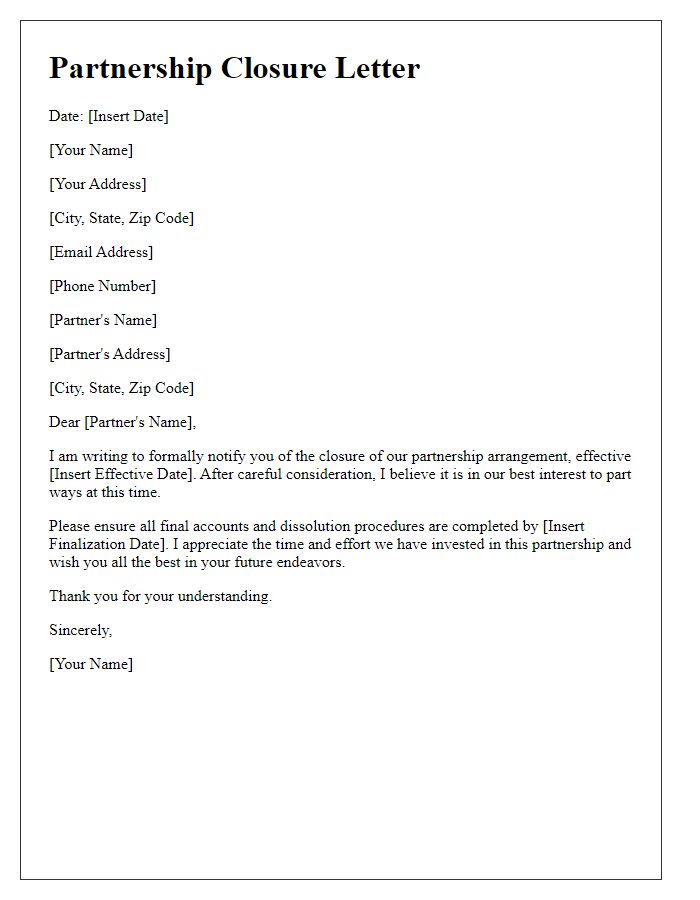


Comments